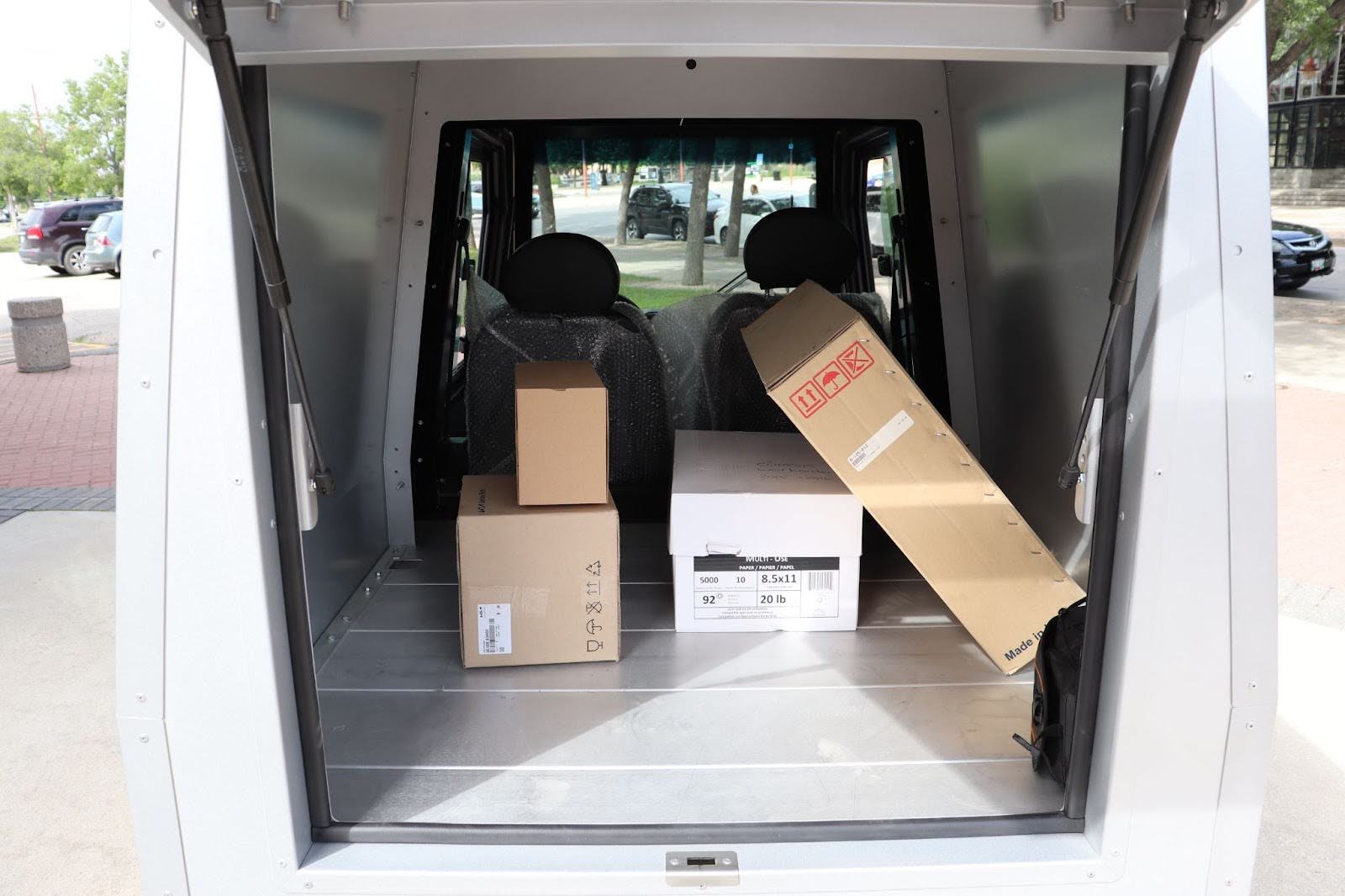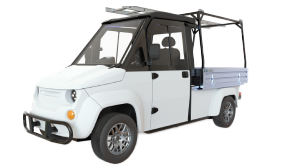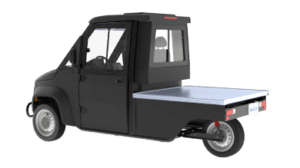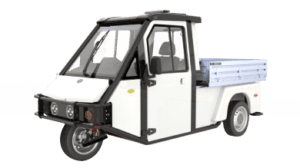Why Small Delivery Vehicles Need Flexibility
The demand for flexibility in small delivery vehicles goes far beyond the standard need for speed and efficiency. Many industries face unique operational challenges that require vehicles capable of adapting to specific delivery conditions. Customization becomes not just a benefit but a necessity for businesses looking to optimize their fleets.
Industries like food delivery, medical supplies, and construction all have distinct logistical needs. A restaurant might need temperature-controlled compartments for perishable items, while a construction company might require reinforced cargo space for tools and materials. What’s often overlooked is how businesses can struggle when their delivery vehicles aren’t properly equipped for these specific tasks. Customizing the vehicle to meet these diverse needs saves time, increases reliability, and ultimately boosts customer satisfaction.
Beyond technical requirements, there’s also the need for vehicles to adapt to geographic challenges. A small delivery vehicle that performs efficiently in a dense urban environment might need additional modifications to handle rural deliveries, ensuring that businesses aren’t limited by the terrain they operate in. This degree of flexibility allows companies to offer seamless services regardless of location or industry-specific challenges.
Diverse Business Requirements
One of the key challenges for businesses using small delivery vehicles is meeting the specific needs of their industry. While the conversation often revolves around speed or vehicle size, the true complexity lies in how vehicles can be customized to address diverse operational demands. Different industries require tailored solutions that go beyond what a standard vehicle can provide.
For example, in the pharmaceutical industry, temperature control is critical, as even a minor fluctuation can compromise the integrity of sensitive products. On the other hand, e-commerce businesses might prioritize large cargo space and efficient interior layouts for handling multiple packages at once. Customization becomes essential to ensure that the vehicle matches the operational flow of each industry. Many businesses suffer unnecessary delays and inefficiencies when they attempt to use a one-size-fits-all vehicle for these varied tasks.
Why Customization Matters
Customization directly impacts operational efficiency in ways that often go unnoticed. When businesses invest in tailor-made features, they can streamline processes that would otherwise require workarounds. Some overlooked benefits of customization include:
- Better storage solutions that reduce the need for frequent trips, increasing overall delivery efficiency.
- Optimized interiors that allow drivers to easily access tools or packages, reducing time spent searching for items.
- Enhanced maneuverability through city streets or rural roads by adjusting the vehicle’s suspension or payload capacity to match the terrain and delivery requirements.
Customizing small delivery vehicles is not just about making minor tweaks; it’s about creating a seamless workflow that addresses the specific logistical demands of the business, ultimately reducing costs and boosting efficiency.
Payload Capacity and Cargo Space Modifications
Many experts focus on the standard payload capacities of small delivery vehicles, but what’s often overlooked is how customizing payload capacity can significantly enhance a vehicle’s versatility. For businesses handling heavy or bulky items, having the ability to modify a vehicle’s payload to accommodate up to near 1,500 lbs for the MAX-EV is a significant amount of cargo and efficiency. If seeking a quicker more nimble vehicle for lighter delivery needs, the MAX-EV 3 with 300lbs of payload can get drivers into congested areas with ease. This added flexibility allows businesses to avoid overloading issues and ensures the vehicle is equipped for a wider variety of tasks.
Increasing Payload Options
Rather than being restricted by a vehicle’s standard configuration, businesses can modify their vehicles to meet unique cargo requirements. Whether it’s for construction materials, medical equipment, or even large retail goods, increasing payload capacity ensures businesses can meet diverse delivery needs without compromising safety or efficiency. Or add turf tires and 4wd for any terrain.
Custom Cargo Compartments
Customizing the cargo space is equally critical. With options like tilting beds, van bodies, or flat decks, vehicles can be adapted to handle everything from fragile goods to bulk items. These modifications are not just about increasing space—they ensure that the cargo is transported securely and efficiently, minimizing potential damage or delays during delivery.
Temperature-Controlled Delivery Solutions
In industries like food delivery or pharmaceuticals, maintaining the right temperature is not just a convenience—it’s a necessity. Small delivery vehicles that lack temperature control solutions may struggle to meet the high standards required for these sectors. Many experts talk about speed and efficiency, but temperature consistency is equally crucial, especially for businesses dealing with perishable or sensitive items.
Refrigerated Van Bodies
One often overlooked option is the use of refrigerated van bodies in small delivery vehicles. Installing these specialized compartments allows businesses to transport temperature-sensitive products such as frozen foods, vaccines, or medical supplies, maintaining their integrity throughout the journey. The ability to control temperatures on demand makes these vehicles ideal for industries where temperature deviations can lead to costly product spoilage or regulatory issues. Westward is working with third parties to offer temperature controlled van bodies.
Maintaining Consistent Temperatures
What’s often not discussed is how simple modifications, such as adding insulation or advanced cooling systems, can help maintain consistent temperatures, even in fluctuating weather conditions. Many businesses overlook the fact that it’s not just about having a cooling system, but also about ensuring that it operates efficiently across varying climates and over long distances. Key advantages include:
- Insulation systems that prevent rapid temperature changes inside the vehicle, ensuring that goods remain at the correct temperature.
- Custom cooling units that can be adjusted for specific ranges, whether for frozen goods or ambient temperature items.
This level of customization ensures that businesses relying on temperature-controlled deliveries can consistently meet industry standards, reduce waste, and enhance overall service quality.
Customizable Interiors for Optimized Workflow
The interior design of delivery vehicles is often underappreciated, yet it plays a crucial role in optimizing the workflow for businesses. While many experts focus on cargo space and payload, the organization within the vehicle is what can make or break the efficiency of daily operations. Customizing the interior layout ensures that delivery drivers can access tools, packages, or supplies quickly and safely, which ultimately reduces downtime and boosts overall productivity.
Tool Storage and Shelving Options
A frequently overlooked aspect of interior customization is the addition of custom storage solutions like shelving units or tool chests. For businesses that require specialized equipment—such as maintenance crews, technicians, or medical supply companies—having dedicated compartments ensures that everything is organized and easy to access. These custom interiors can:
- Maximize space efficiency by using vertical shelving and pull-out drawers.
- Minimize search time by keeping frequently used tools and materials in designated locations.
- Prevent damage by securing fragile or sensitive items with customized holders.
Ergonomic Enhancements
Driver comfort is often neglected in the design of small delivery vehicles, but it’s a critical factor in maintaining productivity during long shifts. By adding adjustable seats, workspace options, and other ergonomic features, businesses can ensure that drivers remain comfortable throughout the day. This attention to ergonomics not only improves the driver’s experience but also reduces fatigue and the risk of injury, leading to:
- Faster task completion due to a more comfortable and accessible workspace.
- Enhanced safety with features like easily reachable controls and optimized sightlines.
Enhancing Security for High-Value Deliveries

Security is often viewed as an afterthought in the design of small delivery vehicles, yet it is a critical factor for businesses transporting high-value goods. Whether it’s expensive electronics, sensitive documents, or pharmaceutical products, having customized security features can significantly reduce the risk of theft or loss. Many businesses fail to recognize how integrating advanced security solutions into the vehicle itself can offer peace of mind and prevent costly incidents.
Secure Locking Systems
One of the most straightforward yet effective ways to improve vehicle security is by adding custom locking mechanisms. Standard locks may not be sufficient for high-value deliveries, but reinforced doors and tamper-proof locks provide an extra layer of protection. These systems can be designed to:
- Prevent unauthorized access by using high-security key or digital locks.
- Reinforce doors and cargo compartments, making break-ins more difficult.
GPS Tracking and Monitoring
Another underappreciated security feature is the integration of GPS tracking systems. By monitoring the vehicle’s location in real time, businesses can ensure that deliveries are completed as planned, with immediate notifications in case of detours or delays. These tracking systems also help identify the vehicle’s whereabouts in case of theft, adding another layer of security to high-value deliveries. Westward works with RedTail telematics to offer any GPS needs a customer may have.
Adapting Vehicles for Different Terrains
While small delivery vehicles are often praised for their agility in urban settings, their potential to operate on varied terrains is an underexplored advantage. Many businesses operate in areas where road conditions are unpredictable, ranging from rugged rural routes to snow-covered city streets. Modifying vehicles to handle different terrains ensures that deliveries are not restricted by environmental challenges, allowing businesses to expand their operations into previously inaccessible areas.
Tire and Suspension Upgrades
One of the most critical modifications for terrain adaptability is upgrading the vehicle’s tire and suspension systems. Standard tires and suspension setups are often insufficient for navigating rough or uneven terrain, but by switching to off-road tires or wider fenders, small delivery vehicles can handle everything from gravel roads to unpaved paths. Additional benefits of these upgrades include:
- Improved traction on slippery or loose surfaces.
- Better vehicle stability when carrying heavier loads over uneven ground.
- Reduced wear and tear on the vehicle’s frame and suspension due to enhanced shock absorption.
All-Weather Adaptability
Deliveries can’t stop just because the weather takes a turn for the worse, which is why all-weather adaptability is another essential modification. Many experts overlook the importance of accessories like winter tires or weather-resistant materials for vehicles operating in harsh conditions. These upgrades allow the vehicle to maintain performance in rain, snow, or extreme heat, ensuring reliable deliveries year-round. Additional modifications like heated mirrors or snow scrapers can further enhance the vehicle’s functionality in challenging climates.
By customizing small delivery vehicles to tackle diverse terrains, businesses can expand their operational reach, making it possible to deliver goods efficiently in both urban and rural environments.
Electric Power Customization: Battery and Charging Options
One of the most significant advantages of electric delivery vehicles is the ability to customize the power system to suit specific business needs. While many experts focus on the environmental benefits of electric vehicles, fewer discuss how flexible battery and charging options can optimize operational efficiency. By tailoring these elements, businesses can ensure their vehicles are always ready for the unique demands of their delivery routes.
Battery Capacity Options
Westward’s MAX-EV offers a range of lithium-ion battery packs, with capacities that provide anywhere from 30 to 120 miles per charge. This customization allows businesses to select the right battery based on their specific route distances:
- Longer routes can benefit from high-capacity batteries, reducing the need for frequent recharging stops.
- Shorter, urban routes may prioritize smaller batteries to optimize energy use and reduce weight.
Flexible Charging Solutions
Not every business has access to the same infrastructure, which is why offering Level 1 and Level 2 charging options is crucial. Businesses can choose slower overnight charging for longer downtime or opt for faster charging solutions to minimize idle time between deliveries, ensuring vehicles are always ready for the next job. This flexibility empowers businesses to adapt their energy needs based on their operational environment and workload.
Branding and Aesthetic Customizations

The role of delivery vehicles extends beyond logistics—they serve as mobile advertisements for businesses, representing the brand on the streets. While many discussions around small delivery vehicles focus on functionality, the opportunity to integrate branding and aesthetic customization is often overlooked. This aspect of customization not only enhances the vehicle’s appearance but also strengthens brand identity and visibility.
Custom Paint Jobs and Graphics
One of the simplest yet most impactful modifications is adding custom paint jobs and brand graphics. Businesses can use their delivery vehicles as moving billboards, ensuring that their logo, colors, and message are prominently displayed. These customizations allow companies to:
- Build brand recognition in their delivery zones.
- Enhance professionalism, creating a polished, cohesive look across their fleet.
- Attract new customers, as eye-catching designs can generate interest while the vehicle is in transit.
Exterior Modifications
Beyond just visuals, exterior modifications like roof racks or lighting setups can serve both functional and branding purposes. Roof racks allow for additional cargo storage while still displaying brand messaging, and specialized lighting can improve visibility at night, further enhancing brand presence while ensuring safer operations. These aesthetic and functional upgrades allow businesses to reinforce their image while meeting practical needs.
Optimizing Vehicles for Efficiency in Delivery Routes
While much attention is given to the size and speed of delivery vehicles, route efficiency is a critical factor that is often neglected. Small delivery vehicles like the MAX-EV 3 can be further enhanced with technologies and modifications that prioritize quick and efficient deliveries, particularly in congested urban environments. Businesses can save both time and fuel by optimizing how vehicles interact with their routes and surroundings.
GPS and Routing Systems
Integrating GPS and route optimization software into delivery vehicles can drastically reduce travel time by selecting the most efficient paths. These systems allow drivers to:
- Avoid traffic hotspots, reducing delays during peak hours.
- Plan multi-stop routes that minimize backtracking or wasted time.
- Adapt in real-time to road closures or accidents, ensuring smooth operations.
Quick-Access Doors and Compartments
Another overlooked factor is the use of quick-access doors and easy-access compartments. These features allow drivers to make faster deliveries by reducing the time spent opening and closing doors or searching for packages. By streamlining access points, businesses can shave valuable minutes off each stop, resulting in a more efficient delivery process overall.
Future-Proofing Small Delivery Vehicles with Modular Upgrades
As businesses evolve, their delivery needs often change, which is why future-proofing vehicles through modular upgrades is essential. Instead of replacing an entire fleet, businesses can adapt their existing vehicles to meet new challenges by incorporating modular add-ons.
For example, adding or removing features like tow hitches, additional storage units, or van bodies allows the vehicle to scale with the business’s growth. These upgrades ensure that small delivery vehicles remain relevant, offering flexibility for expanding delivery routes, larger payloads, or new services.
By investing in modularity, businesses can extend the lifespan of their fleet while staying agile and responsive to market demands, reducing both costs and downtime.































